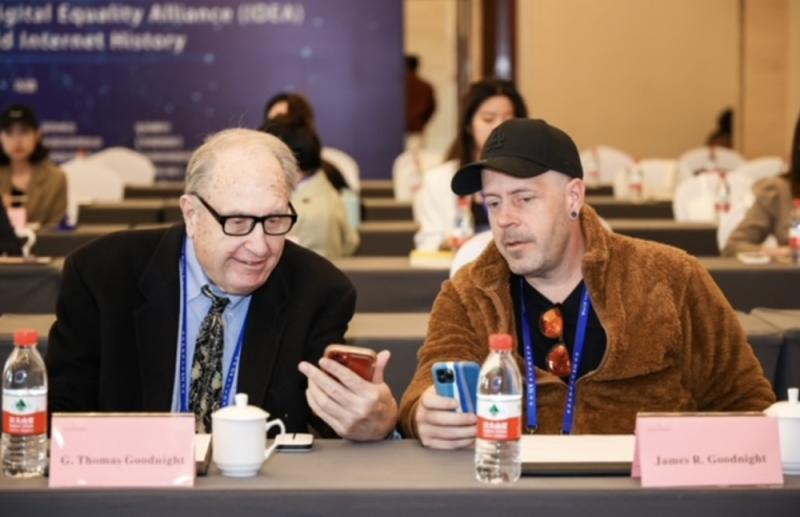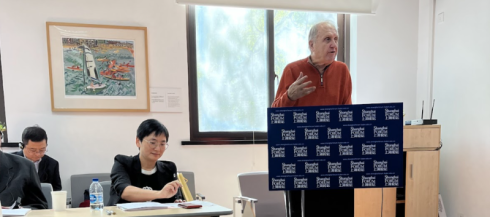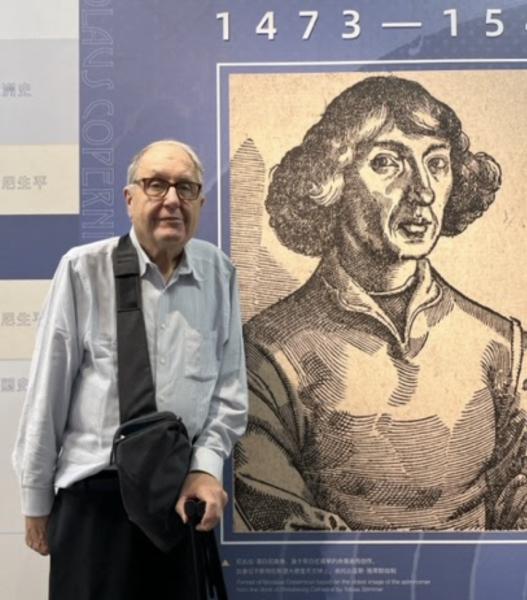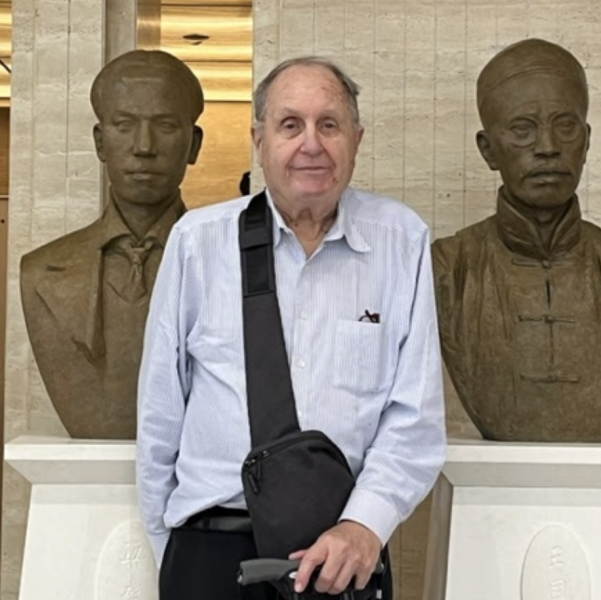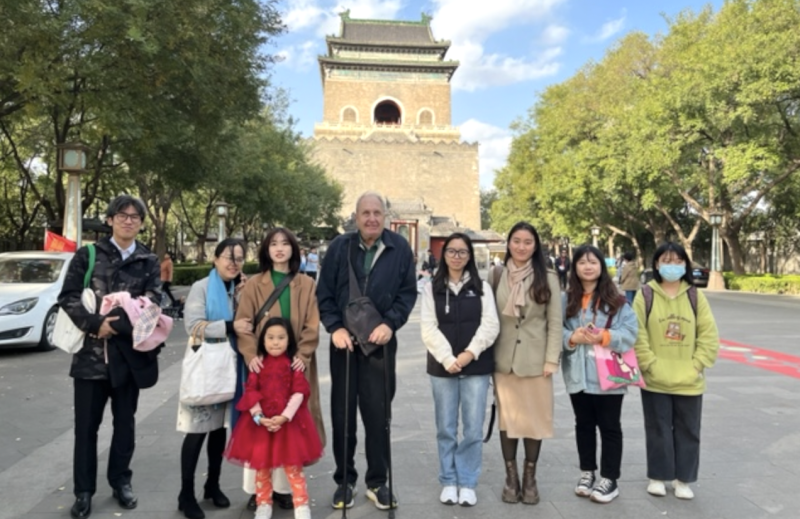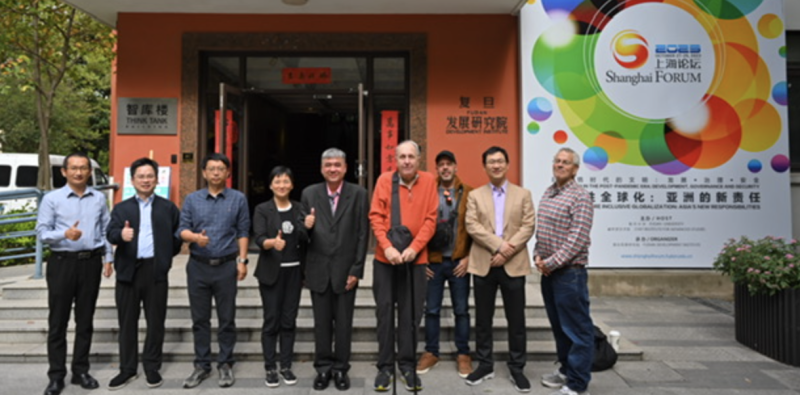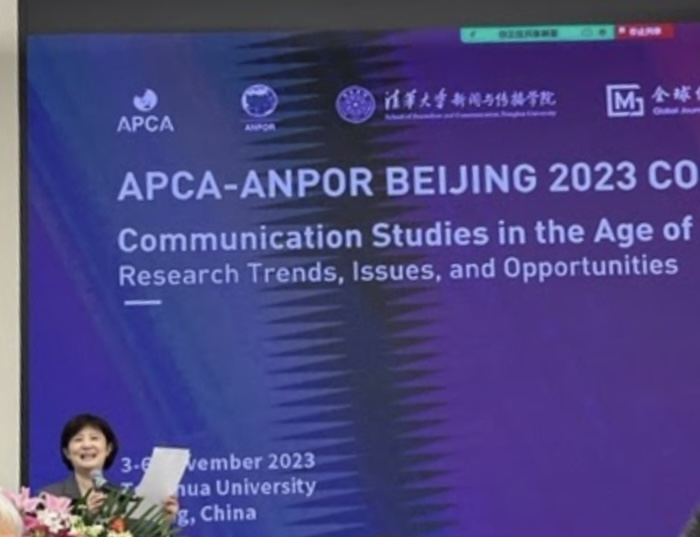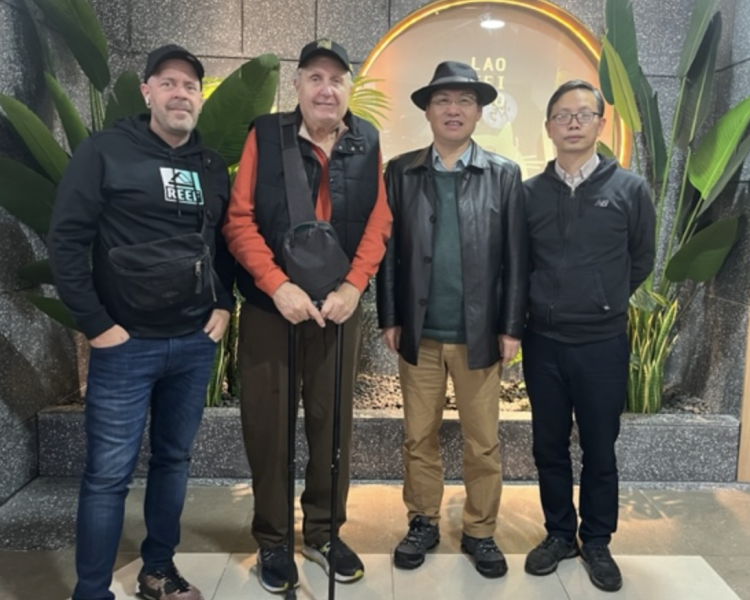Happy Lunar New Year from the USC US-China Institute!
Tom Goodnight speaking about Communication in China (Oct.-Nov. 2023)
Distinguished USC scholar Tom Goodnight is on a speaking tour in China. Prof. Goodnight will visit schools in Shanghai, Beijing and Jiangnan. The schedule is below.
When:
October 29, 2023 8:00am to November 16, 2023 8:00am

G. Thomas Goodnight, A Vibrant Field for Our Time?
The field of communication shapes up as an assembly of international efforts across the globe. Journalism and Communication are traditional partners dedicated to the practices of writing, speaking, and visual arts in the interests of reporting, news, and long-form essays on current affairs. A vibrant field of communication is emerging with partners in information science, data science, sociology, linguistics, brain science and business schools. The following talks comprise a set of conversations about the complex, even chaotic prospects and changes and the possibilities of cooperation.
Schedule:
10 Nov Fudan University Oceans of Communication. Tides of Change. How Can We Navigate Complexity? (Slides)
Lectures are 50 minutes in length, followed by discussion. The lectures and seminars will be recorded with permission.
More resources:
1. 29 Oct Shanghai-Fudan Conference
Artificial Intelligence and Image Futures
China and the United States are committed to investments in Artificial Intelligence. The term is everywhere in 2023. AI actually refers to an assembly of techniques that accelerate the datification of society, the installation of autonomous control communication mechanism by government and markets. The paper introduces the mix of big media companies and government comfort given to AI promise. James Goodnight will speak from the point of view of entrepreneurial vision in the re-flow of images and new possibilities for the photograph.
2. 30 Nov Tsinghua University
Journalism and the Anthropocene
The Anthropocene and the Holocene are two ways that stratigraphers define the present. The Holocene is the 10,000 year present warming period that is characterized over the last 200 years by rapid industrialization, population growth, and increasing jeopardy for species. The Anthropocene is a term that is under debate. The Anthropocene is a time of accelerating change such that human extraction is of life, minerals, and fossil fuel resources are conducted systematically on a global scale. The Anthropocene invites journalism to recast its master narratives of progress, metanarratives of national commitment to the environment, and our micro narratives of care and caution in everyday life. The essay identifies seven emergent vectors of Anthropocene journalism that articulate progress of eco- civilization and care for the planet. Journalists strategies to critique and confront grand utopian and dystopian narratives are presented.
3. 31 Nov Tsinghua University
AI Predicts the Future of our Field—an Energy Alternative?
This seminar invites open discussion of areas for work in communication that create opportunities forcooperation and coalition of programs in China and the US. I report on ChatGPT and an AI version of trends of areas that are up and down in the field of communication and journalism. Do you agree? What futures do you see? Energy studies are briefly introduced as a context for journalism and communication development. Energy communication can be extended to training of journalists to cover ecology, sustainability, and resilience. Should the rubric of the field be widened to examine communication in the biosphere more generally? How can ‘intelligent’ communication be worked out in planning and real time project? What can communication contribute to the UN goals of sustainable development and resilience? What are the areas ripe for cooperation between Tsinghua and USC: Master’s Education, Visiting Scholars, Undergraduates, Doctoral Research? A power point will be circulated before the seminar.
4. 2 Nov CASS:
The Spirit of Science: Competition, Connection & Cooperation
The history of these times will be written as a golden age of science. Nation are investing rapidly in national and regional scientific processes of development and systems of research and dissemination. The paper presents the scientific viewpoint from the position of modern pragmatism. The ideas of community of inquiry, problem solving, and consciousness are shown to be bounded by complex choices in contemporary research with extended horizons. The American Association for the Advancement of Science work is presented to illustrate how scientists can become spokesmen and women for their findings and work. The US National Academy of Sciences that discusses the science of science cooperation. In complex areas team play is important to imagine, negotiate, and sustain inquiry. I imagine 3 areas where the trajectories where China-US work may compete, connect, and ultimately develop the glue for cooperation.
5. 2 Nov CASS
Building Publics for Science: Communities & Audiences in the US*
Science skepticism has grown in the United States over the last few years. Political rhetoric blames science for problem monsters. The worlds of science are responding with measures that grow the appreciation of scientific research, history, methods, and benefits. This paper introduces the work of agencies at the federal level including the National Science Foundation and Center for Disease Control. Also, examined are strategies of edification and outreach, a tradition of science communities in the United States. Finally, the ideas of citizen science are introduced. Natural philosophy in the 19 th century was popular in many parts of the world. The support for science is being gathered once again through various efforts to repair old pools of poisons and new forests of hope.
6. 6 Nov Tsinghua University:
East-West Conference: Big History & Culture Exchange
Big History is a movement by historians to examine the story of material change, cultural construction, conflict, and religion across the globe. Big History asks to rethink the relation among spheres of lifeworld activities and events. My comments here are informal and brief. The relation of East and West, North and South are being rethought at the present. Global cities, too, present a living history of the evolution of the local and regional. Big History, Biomes, and Lifeworlds constitute the “magma” (C. Castoriadis) of the social imaginary of cultural exchange.
7. 7 Nov Wuzhen
Opportunity”: The Wounds of Being Un-Connected. The digital divide is well-known in the United States. USC is a campus rich with digital resources. It is centered in south central Los Angeles where Wifi is scarce. Homeless people in LA have no power to charge cell phones. Appalachia is a mountainous coal mining region, not served well by the digital media. This talk will introduce United States efforts to overcome the digital divide through throwing money at media companies. The debate among cable, wireless and satellites will be discussed. The question of AI and increasing global digital inequalities will be raised.
8. 8 Nov Zhejiang University:
Pandemic, AI, and the Cybersphere: Where the Entrepreneur?
Media diffusions is a mixed product of an historical moment and the asynchronized conversions of traditional to new media. In the US, pandemic culture enhanced digital media dependency The effects of cell phone totems was mixed across local communities. Media streaming is the product of an oligopoly of media companies. Digital conversion of critical discussion to virtual conversation took off in the post-pandemic world. AI dreams followed. What are the resources of political economy thinking to begin to measure the costs streaming media and the consequences of AI assemblies? How do entrepreneurs participate in the atunement of independent users, audiences, and publics? What are the possibilities of entrepreneurship for photography and the image in the face of vast, accelerating cybersphere expansions? James Goodnight will present AI experiments from the point of view of an art director and photographer. Tom Goodnight will discuss the dialectic of history and media.
9. 9 Nov Zhejiang University:
The Intimate Sphere: Youth and Aging Cultures
The United States studies of communication used to be organized around interpersonal, communication disorders, and literary interpretation. The discussion reviews the ways Speech Communication was centered. The seminar asks how the presence of the human as agent in these times till warrants study. The study presents slides illustrating what geriatrics is working on at USC and elsewhere. I also raise the question of children and juvenile communication in post-pandemic life. Examples are drawn from my experiences at USC and research in America and Europe. Ethnography of concern and problem solving refresh methods of inquiry.
10. 13 Nov Fudan University:
Public diplomacy has been divided into two categories: Hard and Soft Power. Strategic diplomacy generates and shifts cultural, social and ecological energies that fuel the uses of power over time. This talk examines the Energy that is necessary to build up for a nation or international group to conduct successful diplomatic efforts. Geopolitics is a heavy user of kinetic, economic, and financial power. Geo-union is a counterpart where good-will, exciting culture, and collaborations are started, renewed and continued. The article speaks about the limits of geopolitics in generating diplomatic energy. The talk will present Goodnight’s work and research in Uganda with Books for Development, Chile with the Fulbright program, a discussion of international food security, and international structures of discussion and governance for the Polar Regions. The talk will elaborate pathways from undergraduate life to the international sphere of diplomacy and communication. The collaborative unions of energy and power over time constitutes a renewed concept of diplomacy, the living discourse of international relations.
Featured Articles
January 4, 2024
We note the passing of many prominent individuals who played some role in U.S.-China affairs, whether in politics, economics or in helping people in one place understand the other.
Events
Thursday, March 21, 2024 - 4:00pm PST
Ying Zhu looks at new developments for Chinese and global streaming services.
Tuesday, March 19, 2024 - 4:00pm
David Zweig examines China's talent recruitment efforts, particularly towards those scientists and engineers who left China for further study. U.S. universities, labs and companies have long brought in talent from China. Are such people still welcome?



